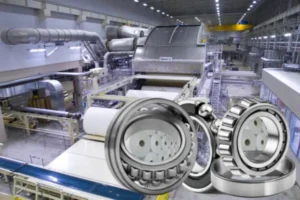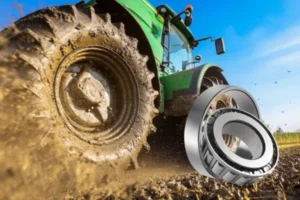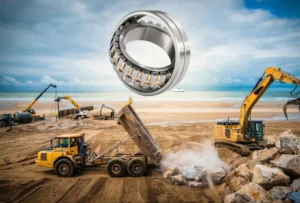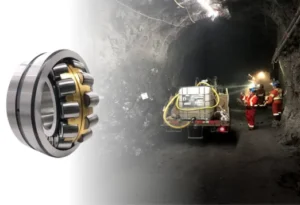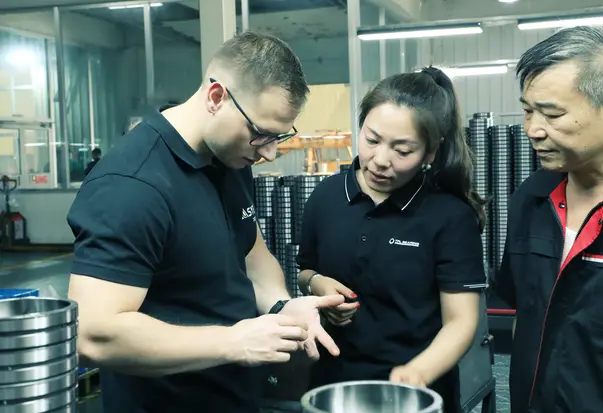You can keep roller bearings working well by following a few easy steps. Regular care is important for how well your bearings work and how long they last. Studies show that not using the right lubrication causes about half of all roller bearing problems in machines.
When you take care of your bearings, you help stop breakdowns and make your equipment last longer. Anyone can learn to make bearings last longer, even if you are new to this. By looking after your bearings and cylindrical roller bearings, you help your machines work better and more often.
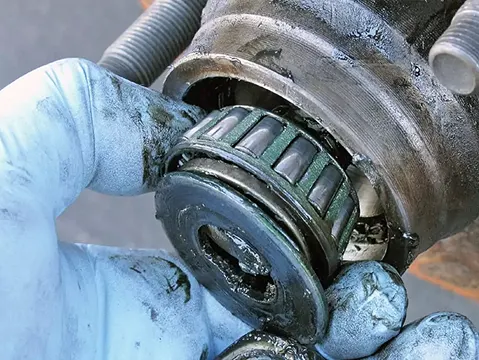
Key Takeaways
- Look at your roller bearings often. Listen for strange sounds to find problems early.
- Clean bearings by taking off dirt and old grease. Put on new lubricant to keep them safe from damage.
- Pick the right kind and amount of lubricant for your bearing. This stops harm from using too much or too little grease.
- Be gentle when you move and store bearings. Keep them in a clean, dry spot so they do not rust or get hurt before you use them.
- Use the right steps and tools when putting in or taking out bearings. This helps stop them from bending or breaking.
Roller Bearings Inspection
Checking your roller bearings often helps you find problems early. This keeps your roller bearings working well. You can use easy steps to look for damage or wear. These steps work for all bearings, even cylindrical roller bearings.
Visual Checks
Begin by looking at the bearing. You do not need special tools for this. Look closely at the bearing and the part that holds it. Check for leaks, dirt, or leftover lubricant. Use a flashlight to see small things.
Here are steps for a good visual check:
- Make a plan for when to check, using the manufacturer’s advice and how much you use your machine.
- Get your tools ready: gloves, cleaning cloths, a flashlight, and something to take pictures.
- Look for leaks, dirt, or leftover lubricant near the bearing.
- Check for strange marks, stains, or color changes.
- Listen for weird sounds when the machine is on.
- Write down what you see and hear. Take pictures before you clean or move the bearing.
- If you notice anything odd, write it down and tell the maintenance team.
Tip: Always keep notes and photos. This helps you see changes over time and find patterns that could cause roller bearing failure.
Surface Damage
Surface damage is a big reason roller bearings stop working. You can see many types of damage with your eyes or a magnifying glass.
Look for these signs of damage or wear:
- Spalling (flaking metal) or pitting (tiny holes) on the surface
- True or false brinelling marks (small dents or lines)
- Craters or flutes from electricity
- Discoloration (blue or brown) from getting too hot
- Odd wear paths that might mean things are not lined up right
- Dents or bent spots from dirt or debris
- Cracks or broken parts from being used too much
- Rough or bumpy spots from things rubbing too hard
- Rust or stains from water or chemicals
- Indentations in the raceways
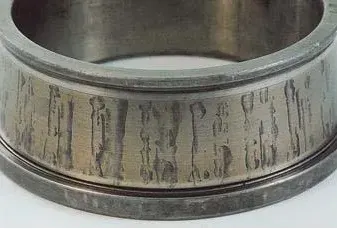
These problems often happen in cylindrical roller bearings. Corrosion, spalling, and too much weight can make things worse if you do not fix them fast. Damage like dents or nicks can happen when moving or installing bearings. Always check for damage before putting in new bearings.
Vibration and Noise
Watching for vibration is important for keeping machines healthy. Vibration analysis helps you find roller bearing problems early. Even small problems in cylindrical roller bearings make high vibrations. These show up before you see or hear bigger issues.
How to check vibration:
- Put sensors on the bearing housing to measure vibration.
- Collect data while the machine is running.
- Look at the data for strange patterns or spikes.
- Use tools like Fast Fourier Transform (FFT) to find problem spots.
- Compare your results to normal vibration levels for your machine.
Strange vibration can mean wear, things not lined up, or damage inside the bearing. Finding problems early lets you fix them before the machine breaks.
Noise can also tell you about bearing health. Listen for buzzing, roaring, hissing, or grinding. Each sound means something different.
| Noise Type | What You Hear | What It Means |
|---|---|---|
| Buzz, Roar, Howl | Rough, loud sounds | Contamination or surface damage |
| Hissing | Soft, steady noise | Small bearings or rough surfaces |
| Chatter, Crunch | Irregular, sharp sounds | Damaged raceways or rolling elements |
| Screech, Shrill | High-pitched, metal sounds | Spalling or not enough lubrication |
| Rustle, Rattle | Metallic, continuous noise | Grease issues or worn cages |
If you hear any of these, stop the machine and check for damage. Watching vibration and noise helps you fix problems before roller bearing failure happens.
Lubricant Condition
Lubrication keeps bearings cool and stops them from wearing out. Bad lubrication is a top reason roller bearings fail. Always check the lubricant when you inspect.
Signs of lubricant problems:
- Discoloration (blue or brown) on raceways or rolling elements
- Sticky or burnt stuff (varnish) on surfaces
- Too much wear or overheating
- Scratches, smears, or grooves on metal parts
- Rust or stains
If you see these, the lubricant may be bad. High heat, the wrong type, or not enough lubricant can hurt the bearing. Always use the right lubricant and change it if it is old or dirty.
Note: Watching temperature and vibration helps you find lubricant problems before they cause roller bearing failure.
By following these steps, you can spot damage, watch for wear, and keep your cylindrical roller bearings working well. Checking often, watching vibration, and keeping good notes help stop roller bearing failure and make your equipment last longer.
Roller Bearings Cleaning and Contamination
Cleaning Methods
You need to clean your bearings to keep them working well. Start by removing the bearings with the right tools so you do not cause damage. If your bearings have shields or seals, take them off if possible. Soak the bearings in isopropyl alcohol or a safe solvent for about 10 to 15 minutes. This step helps dissolve dirt and old grease. For tough grime, use a soft brush and soak the bearings again if needed. Dry the bearings with a lint-free cloth. You can also use compressed air to make sure no moisture stays. Always apply fresh lubricant after cleaning and rotate the bearings to spread it evenly. Put the shields or seals back on and check that the bearings spin smoothly and quietly.
Ultrasonic cleaning works well for removing tiny particles from cylindrical roller bearings. This method uses sound waves to shake loose dirt. However, you should only use ultrasonic cleaning on separated parts. If you clean assembled bearings this way, you might cause small surface damage. The US Navy recommends cleaning each part with warm, filtered petroleum solvents and pressure flushing. This method removes grime without harming the bearings.
Preventing Contaminants
You can prevent wear and damage by keeping contaminants out of your bearings. Dust, dirt, and water are the main threats. These can enter through poor seals or during handling. Always keep bearings in their original packaging until you are ready to install them. If you must unwrap them, cover them with a clean, lint-free cloth. After you install the bearings, wrap or cover them to protect against dust and dirt.
Use clean gloves, tools, and rags when you handle cylindrical roller bearings. Clean all parts, such as the housing, shaft, and seals, before you put the bearings in place. Make sure your work area stays clean. If you use lubrication, keep containers closed and tools clean. Good sealing methods, like lip seals or labyrinth seals, help block out contaminants. Regular checks and cleaning help you spot problems early and keep your bearings in top shape.
Seal Inspection
Seals play a big role in keeping lubrication fluids clear and blocking out dirt. You should check seals every time you inspect your cylindrical roller bearings. Look for cracks, tears, or signs of hardening. Damaged seals let in dust, water, and other harmful particles. Replace any bad seals right away to prevent wear and keep your bearings running smoothly.
A good seal keeps out water and dirt, which helps your bearings last longer. If you work in a harsh environment, use special seals made for tough conditions. Always check that seals fit tightly and show no gaps. By caring for your seals, you help your cylindrical roller bearings work better and avoid early failure.
Lubrication for Maintenance
Lubrication Schedule
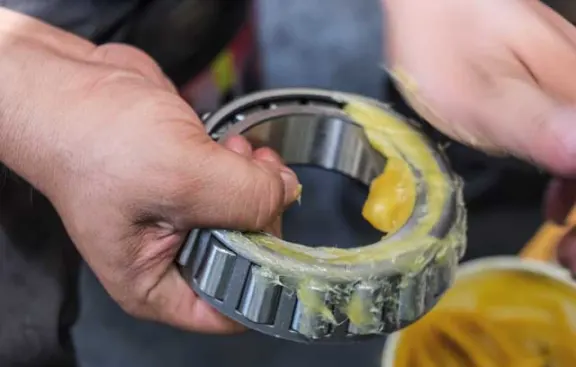
A good lubrication schedule helps your bearings work well. How often you add lubricant depends on many things. These include bearing type, size, and where the bearing is used. For cylindrical roller bearings, you need to watch these things closely.
- How often you grease depends on type, size, and speed.
- Dust, water, shaking, and heat mean you need to grease more.
- Manufacturer rules are careful to make bearings last longer.
- If things are perfect, you can sometimes wait longer to grease.
- Ball bearings need grease less often than cylindrical roller bearings.
- Bearings on up-and-down shafts need grease twice as much as sideways ones.
- If it gets hotter than 160°F, grease more often for every 27°F higher.
- Big cylindrical roller bearings (over 300 mm wide) need grease more often.
You can use this formula to find how much grease you need:
G = 0.005 × D × B
G is grease in grams, D is the outside diameter in mm, and B is the width in mm.
Tip: Always listen to the manufacturer and change your schedule if you see more dust, heat, or shaking.
Choosing Lubricants
Picking the right lubricant is important for cylindrical roller bearings. You need to match the lubricant to the load, speed, and heat. Grease is best in dirty places because it stays put. Oil is better for fast bearings because it cools them.
| Criterion | Details |
|---|---|
| Operating Conditions | Think about load, speed, and heat. |
| Lubricant Viscosity | Match thickness to bearing type and heat. |
| Lubricant Type | Use grease for dust; oil for speed and cooling. |
| Grease Components | Pick the right base oil, thickener, and extras. |
| Oil Types | Choose mineral or synthetic oils with the right thickness. |
| Lubrication Methods | Use oil bath, drip, splash, or forced flow as needed. |
If you pick the wrong lubricant, your bearing can break. If it is too thin, it does not protect enough. If it is too thick, it can get too hot. Always check the manufacturer’s advice when you pick a lubricant for your cylindrical roller bearings.
Note: Lubricants with extreme pressure (EP) extras help with heavy or sudden loads.
Over- and Under-Lubrication
You should not use too much or too little lubricant. Both can hurt cylindrical roller bearings and make them wear out faster.
| Aspect | Over-Lubrication (Overgreasing) | Under-Lubrication |
|---|---|---|
| Signs | High heat, broken seals, hard or crusty grease | Wear, not enough grease, loud sounds |
| Risks | Wasted energy, grease breaks down, seals break, bearing fails | Metal rubs metal, fast wear, early failure |
| Mechanism | Too much grease makes heat and pressure, hurts seals | Not enough grease means rubbing and wear |
| Prevention | Use the right amount and check often | Stick to your plan and watch bearing health |
People sometimes add too much or too little grease. You can use ultrasound tools to check for rubbing while you add grease. This helps you know when you have enough. For cylindrical roller bearings, always use the right amount and grease at the right times.
Remember: Good lubrication helps cylindrical roller bearings last longer and saves money on repairs.
Cylindrical Roller Bearings Care
Handling and Storage
You must be careful when you touch cylindrical roller bearings. Always wear clean gloves so sweat does not cause rust. Keep bearings in their original box until you need them. This keeps out dust and stops scratches. Store bearings in a cool, dry place. Do not put them in sunlight or near chemicals like acids or salt. Never stack heavy things on top of bearings. This can squash them and change their shape.
Here are some steps for safe storage:
- Put bearings flat in a clean, dry spot.
- Keep the room between 10°C and 30°C and under 60% humidity.
- Use covers or seals to keep out dust and water.
- If you will store them for a long time, put a thin layer of oil or special spray on them.
- Turn the bearings every six months so they do not get flat spots.
Tip: Always check if the storage place shakes. Even small shakes can make false brinelling and cause early damage.
Mounting and Dismounting
Mounting and taking off bearings the right way stops damage. Use the correct tools for your cylindrical roller bearings. For small bearings, use hand tools or heaters to warm the inner ring. For bigger bearings, use hydraulic tools or oil to help remove them. Never hit the bearing with a hammer or use too much force. This can bend or break the bearing.
Some common mistakes are:
- Not lining up the bearing right
- Using too much or too little force
- Not holding the inner race
- Getting the bearing too hot with a torch
Always follow the maker’s instructions. Use heating tools to make the inner ring bigger for easy mounting. When you take off bearings, use pullers or hydraulic tools to do it safely. Clean and dry bearings before you store them again.
Temperature and Corrosion
Cylindrical roller bearings work best when you control heat and stop rust. Keep the temperature below 82°C (180°F) to protect the oil and the bearing. The outside ring can get a little hotter, but not too much. If you use special high-heat bearings, you can go up to 500°C, but always check the oil.
To stop rust:
- Store bearings away from smoke, acids, and salt.
- Keep humidity under 65% and do not let the temperature change fast.
- Use anti-rust oil if you will store them for a long time.
- Use dataloggers to watch temperature and humidity.
Note: Too much weight, shaking, and bad storage can cause early damage or failure. If you follow these steps, your roller bearings will last longer and work better.
You can keep your bearings in top shape by following a few simple steps:
- Store bearings in a clean, dry place and handle them with care.
- Inspect and clean all surfaces before mounting.
- Use the right tools and methods for installation and removal.
- Apply proper lubrication and check it often.
Regular maintenance and early checks help you avoid costly repairs and boost performance. These habits support the longevity of your equipment.
For expert advice or quality products, reach out to TFL Bearings. Our team can help you get the most from your machines.
FAQ
How often should you inspect roller bearings?
You should inspect roller bearings every few months or as your machine’s manual suggests. If you use your equipment a lot or in harsh conditions, check more often. Early checks help you catch problems before they get worse.
What is the best way to clean roller bearings?
Remove the bearing carefully. Soak it in a safe solvent like isopropyl alcohol. Use a soft brush for tough dirt. Dry with a lint-free cloth. Always add fresh lubricant before putting the bearing back.
Can you use any lubricant for cylindrical roller bearings?
No, you need to use the right lubricant for your bearing type and working conditions. Check the manufacturer’s guide. Using the wrong lubricant can cause damage or make the bearing wear out faster.
What are signs that a bearing needs replacement?
Listen for loud noises, feel for rough spinning, or look for rust and cracks.
If you see or hear these signs, replace the bearing soon to avoid machine failure.
